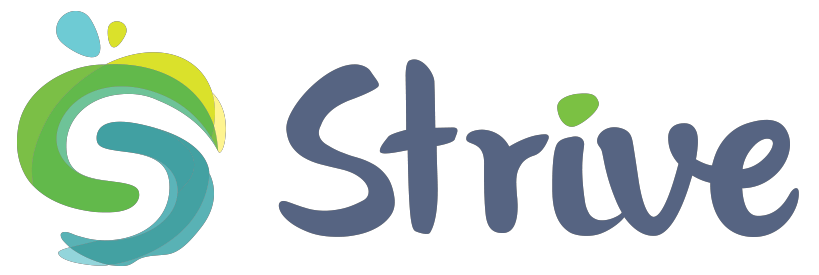DIGITAL PORTFOLIOS IN EARLY YEARS: BALANCING INNOVATION WITH CONNECTION
In 2025, Canada is expected to have one of the most age-diverse workforces in history. This growing diversity brings a wide range of experiences, skill levels, and comfort with technology—especially when it comes to documentation and communication.
In Early Years Education, educators are often navigating between digital and physical tools. Which format is best? How can we stay organized and communicate effectively? These are real, everyday questions in our field. Whether you're documenting children’s learning or tracking your own professional growth, the choice between digital and physical portfolios isn’t always clear-cut.
Through this blog post, you can explore the strengths and challenges of digital portfolios for children, students, and Early Childhood Educators—helping you make informed decisions that work best for your setting.
What Is a Portfolio?
A portfolio is a collection of work that tells a story—of learning, growth, and experience. In early childhood settings, this might be a child’s evolving art and play-based learning, a student educator’s reflections and documentation, or an experienced professional’s record of ongoing professional development.
At its core, a portfolio is meant to reflect the journey. Whether physical or digital, it should capture meaningful moments in a way that is accessible, engaging, and purposeful.
Examples of sites or programs for digital portfolios:
WordPress
Adobe Portfolio
Notion
Google Keep
Google Docs
Microsoft Word
Benefits of Digital Portfolios
1. Flexible Media Options
Digital platforms allow for the use of photos, videos, voice recordings, and more. This adds depth and creativity to documentation, offering families and colleagues a richer understanding of a child’s experiences or an educator’s growth.
2. Easy Sharing
Digital portfolios can be shared instantly with families, mentors, colleagues, and leaders. This increases accessibility and removes the burden of physically transferring materials. It also encourages feedback, collaboration, and extended family involvement.
3. Supports Family Connection
Sharing real-time updates helps families feel connected to their child’s day—even when they can’t be there in person. Seeing their child’s experiences unfold throughout the week or month can build trust, reassurance, and emotional connection.
4. Supports Minimalist Lifestyles
Families committed to reducing clutter may prefer digital portfolios that offer permanent access without taking up physical space. Educators and students also benefit from reduced storage needs and lighter workloads—literally and figuratively.
5. Eco-Friendly and Cost-Effective
Digital portfolios significantly reduce the need for paper, ink, and other materials. For programs committed to sustainability—and those managing fiscal responsibility—this can be a practical and environmentally responsible solution.
6. Searchability and Organization
Many digital platforms allow tagging and categorizing of entries, making it easier to search for specific documentation. Whether you're tracking observations related to a learning domain or finding reflection examples, digital tools can save time and improve organization.
7. Improved Reliability
Digital files are less vulnerable to being lost, damaged, or misplaced. Portfolios stored online remain intact through classroom moves, spills, and busy transitions.
Challenges of Digital Portfolios
1. Learning Curve
Technology always comes with a learning curve. While most educators become more comfortable over time, adopting new platforms may require training, troubleshooting, and extra support at first.
2. Loss of Tangibility
Digital versions can’t replicate the sensory experience of holding a physical book or feeling textured artwork. Flipping through a child’s physical portfolio can be a special bonding experience—one that can be missed in an entirely digital format.
3. Initial Costs
Implementing digital portfolios often requires upfront investment in technology, software, and infrastructure. The size and needs of your organization will determine how much is required.
4. Privacy and Security Risks
Despite advances in cybersecurity, storing, and sharing sensitive documentation online must be handled with care. Accidental sharing or data breaches can have serious consequences, especially when working with children.
5. Limited Access for Young Children
Many digital tools are not directly accessible to children due to age-appropriate use or tech policies. Some families may also be less comfortable with technology, and educators may face barriers to accessing platforms outside of work hours.
6. Screen Time Considerations
Using digital tools in the classroom can pull educators away from being fully present with children. Documentation may need to happen after hours to avoid screen time during play and learning, which may lead to increased workload outside of program hours.
Final Thoughts: Finding Balance
There is no one-size-fits-all solution. Digital and physical portfolios each offer unique benefits and limitations. The key is to reflect on your context: What works best for your families? What tools do your educators need? What aligns with your values and goals?
For some, a hybrid approach—combining physical portfolios with digital documentation—may offer the best of both worlds. Ultimately, the format matters less than the intention: capturing meaningful learning and nurturing strong, respectful relationships.
By staying flexible, open, and responsive, we can use portfolios—whether digital or physical—to support connection, communication, and lifelong learning.
Share your experiences with digital portfolios by leaving a comment below!
